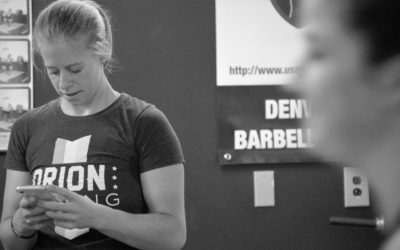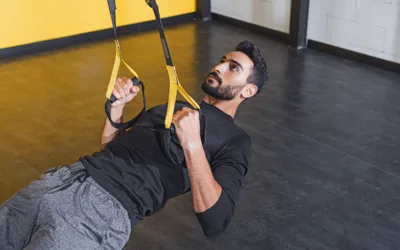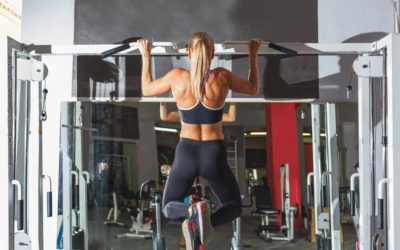Training Strength & Power for Bjj Fighters
TOPIC: Sports Performance
Fred Ormerod is a freelance coach, army reserve medic, nurse, master’s student, and masseuse. He has over a decade of experience working with athletes across the spectrum, from limping and injured to national and international champions. Here he explains how and why you should include strength and power workouts to your training as a BJJ fighter.
Be sure to check out his BJJ MAX POWER sample workout!

Written By
fred ormerod
Fred Ormerod is a freelance coach, army reserve medic, nurse, master’s student, and massage therapist. He’s spent a decade working in healthcare and five years coaching in one of Edinburgh’s leading training facilities.
Website
Programs
Strength & Power Boost BJJ Performance
During my time as a BJJ coach, I coached many athletes to victories at both the national and international level. Through it all, I found strength and conditioning plays a far greater role in an athlete’s success than a lot of people think.
This sentiment is backed by studies finding athletes who back squat and bench press 130% of their body weight pose a competitive advantage. (This number is even higher in many other sports, but I think that’s partly due to the slower uptake of strength training in BJJ practitioners.)
Get a leg over the competition by including strength and power work to your current training routine. Through my experience, I found the following exercises and workout samples to be the most effective at improving your performance as a BJJ fighter.
How to Build Unbeatable Strength on the Mats
Given that strength is a leading factor in success in BJJ competitions, let’s start with the best principles for building strength.
Strength training doesn’t always come naturally to martial artists. I can think of several athletes I worked with where I had to play mind games or tricks to stop them from turning every strength session into either a circuit class or a “bro pump” session. That’s not to say that these styles don’t have their place in the wider scheme of training, but they’re perhaps not the most optimal way to build strength.
The beauty of training strength is that you only need to do it maybe twice per week. When done properly, and to sufficient intensity, a full body training session is effective at building strength.
The benefit of full body training is that no one part of the body is too badly fatigued when it comes to training for their sport later in the day/week. In fact, if you’re able to do your strength training earlier in the day, you may find a “priming effect” if you train BJJ later on.
Bear in mind that BJJ has inherent strength qualities. Most beginners develop certain levels of strength simply by training BJJ. However, there comes a point in training where athletes plateau and adding a new or greater stimulus gives you a boost.
To develop unbeatable strength, you must work at over 80% of your maximum effort for 3-5 reps in each movement. I recommend not lifting more than this very often, so long as you notice yourself getting stronger over time.
Here are a few exercises/movements that develop your strength as BJJ athlete:
- Deadlifts
- Hip thrusts
- Back/front/Zercher squats
- Bench press
- DB bench press
- Floor press
- Pull/chin ups
- Bent over rows
- Seated cable rows
- Cable face pulls
Tempo work
One thing I would add to your training as a BJJ athlete is tempo work.
Eccentric overload training, where the emphasis is on the phase of movement where the muscles lengthen (going “down” in a squat), improves strength, hypertrophy, range of motion, and delayed onset muscle soreness when used consistently in training.
Isometric overload training, where muscles activate but don’t change in length (paused squats) elicits greater muscle fiber recruitment. It’s also great for BJJ athletes as they are often held or in holding positions under tension.
Coach’s Tip: For a better understanding of how to use tempo training in your strength work, check out this blog: Understanding Tempo Training for Strength Gains
Grip Strength
Grip strength is always an important accessory for BJJ athletes. So here are a few exercises/ideas to add to your training:
- Dead hang
- Plate hold/two plate hold
- Farmers hold/carry
- Wrist curls
- Rock climbing
BJJ Strength Training Sample Workout
Here is a rough framework of BJJ strength training sessions I use:
| Session 1 | Session 2 |
| Deadlift variation 5×5 @ 85% | Squat variation 5×5 @ 85% |
| Push vertical variation 5×5 @ 85% | Push horizontal variation 5×5 @ 85% |
| Pull vertical variation 5×5 @ 85% | Pull horizontal variation 5×5 @ 85% |
| Core work (flexion/extension/rotation/anti-rotation/isometric) and grip work | Core work (flexion/extension/rotation/anti-rotation/isometric) and grip work |
Progress these sessions by increasing either the number of reps at 85% of 1rm, or by increasing the amount of weight used.
How to Develop Power/Speed as a Fighter
Turning strength into something useful on a BJJ mat requires adding speed. Power is the relationship between force and how fast it is applied.
As a BJJ athlete, you need to move as fast as possible with as much force as possible. It is worth noting that speed is always limited by strength. You won’t get any faster than your own strength allows, so training for speed without strength is pointless.
You can work at different ends of the strength/speed curve depending on the stimulus you want to train. The sample workout above obviously works at the strength end of the curve, so here we will look more closely at the speed end of the curve.
I want to make an important point here first – one that is butchered all over the internet. Plyometric drills are ones that have a contact time of fewer than 250 milliseconds. These are used for conditioning elastic recoil in muscles and tendons and include things like skipping, pogo jumps, and footwork drills. Ballistic movements are dynamic strength movements used to help develop fast-twitch muscle fibers.
Ballistic movements I use include:
As a BJJ athlete, it’s more effective to train ballistic movements than plyometric ones. This is because dynamic, ballistic movements are far more common in BJJ than plyometric ones (we don’t have to sidestep as often as a soccer player). That’s not to say plyometric training shouldn’t be included at all, but in order to develop speed and power, ballistic training is where we’ll get the most bang for our buck while being more sport-specific.
With Olympic lifts, it’s wise to receive some coaching before you do them. However, recent research shows that the intent of the movement (so long as the bar moves fast) will yield speed adaptations. So as long as the volume of work is matched, you don’t need to include the catch phase (where you catch the bar during a snatch, clean, or jerk) to get the same speed/strength improvements.
The catch phase is where most injuries occur. By removing the catch phase and performing a jump shrug or clean high pull or similar, you’re able to load up the bar with up to 150% of your 1 rep max.
For the most part, I program ballistic training with a view to training the speed end of the strength-speed curve. So the range or weights used is just 40-60% of 1 rep max, but the load has to move fast.
Now, incorporating these movements can be done in several ways. They might even replace simpler ones in your strength training. I like to add them in as a third training session in the week so as not to mix stimuli.
Power Development Sample Workout
Here is an example of a speed stimulus training session I used recently with one of my competing athletes. Notice the isometric mid-thigh pull and wall push superset with the ballistic movement. This is to bring about what we call post-activation potentiation so the box jumps and push ups glean better results.
| Exercise | Sets x reps x intensity |
| Clean high pulls | 5×5 @ 40-60% 1rm clean |
| Snatch | 5×5 @ 40-60% 1rm snatch |
| Isometric mid-thigh pull x box jump | 4 sets: 5 secs max effort pull x 3 box jumps |
| Wall push x ballistic push up | 4 sets: 5 secs max effort push x 3 reps push ups |
The important thing to remember while trying to improve your strength and power as a BJJ athlete is to work at the correct level of intensity. If you go too heavy, you’ll negatively affect your BJJ training and risk injury. But if you go too light, you won’t get any stronger and your time is being wasted.
Following these two sample workouts ensures you’re lifting the just right amount. Strength and power training (when done correctly) translates greatly to your performance on the mats. Put in the work and see your BJJ fighting improve.
Find Your Perfect Training Plan
Sometimes all you need to reach your destination on your fitness journey is an expert guide. Look no further, we've got you covered. Browse from thousands of programs for any goal and every type of athlete.
Try any programming subscription FREE for 7 days!
Related Articles
You May Also Like...
Effective Ways to Coach At-Home Athletes
Transitioning to remote coaching presents unique challenges for strength and conditioning coaches, especially when athletes lack access to standard gym equipment. Effective communication and creative programming are essential to maintain engagement and ensure athletes...
Working Out During Ramadan: Maintaining & Making Gains
It’s falsely believed by many Muslim athletes that Ramadan = losing progress (gains!). This isn’t the case if you train, fuel, hydrate, and sleep appropriately. Of course that’s easier said than done, but following a few of these strategies can make all the difference...
5 Tips to Get Better at Strict Pull Ups
The ultimate bodyweight movement that even good athletes struggle with: pull ups. Getting your first strict pull up as a beginner is a huge accomplishment, but stringing multiple reps together is arguably just as huge. It can take time and some dedicated progressions...
Effective Ways to Coach At-Home Athletes
Transitioning to remote coaching presents unique challenges for strength and conditioning coaches, especially when athletes lack access to standard gym equipment. Effective communication and creative programming are essential to maintain engagement and ensure athletes continue to progress in their training.
Working Out During Ramadan: Maintaining & Making Gains
It’s falsely believed by many Muslim athletes that Ramadan = losing progress (gains!). This isn’t the case if you train, fuel, hydrate, and sleep appropriately. Of course that’s easier said than done, but following a few of these strategies can make all the difference...

Want more training content?
Subscribe
For Coaches
For Athletes
About
Support
Training Lab
Access the latest articles, reviews, and case studies from the top strength and conditioning minds in the TH Training Lab!
Made with love, sweat, protein isolate and hard work in Denver, CO
© 2024 TrainHeroic, Inc. All rights reserved.





